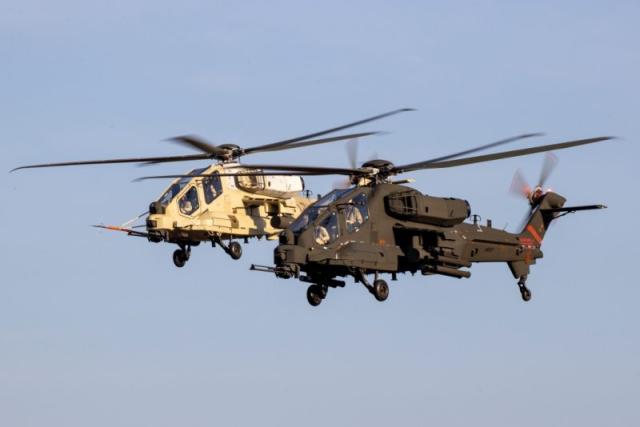 Leonardo showcases the new AW249 helicopter
Leonardo showcases the new AW249 helicopter
The recently held Eurosatory in Paris in June, a global event for Defence and Security, saw the international debut of the new Leonardo AW249 attack helicopter, the pre-production aircraft number 4. The AW249, with military designation AH-249A NEES (Nuovo Elicottero da Esplorazione e Scorta) and known as the ‘Fenice’, is the strong result of a successful collaboration between the Italian Ministry of Defense and Leonardo. The AW249 is a new, technologically advanced, tandem-seat cockpit configured attack helicopter that aims to combine low operating costs with enhanced performance and high survivability characteristics.
On 19 August 2022, an AW249 NEES with test registration CSX82069 (prototype aircraft number 3) and sporting a primer livery, was rolled out from its hangar at Vergiate (Italy) and successfully completed the type’s first flight. The aircraft then performed a second flight early in the afternoon that same day. The first AW249 (prototype aircraft number 1), with test registration CSX82097 (24001), performed on 19 March 2023 its first flight but already in the standard olive drab scheme. In August 2023, this prototype was undergoing hot weather testing in Palma del Río, near Cordoba, Spain.
Four prototypes have been built since then, with two flying aircraft (aircraft number 1 and 3) involved in performance, system integration and payload testing and two (aircraft number 2 and 4) completed and to start testing soon. In mid-June 2024 the two aircraft flew a total of some hundred hours with the full development programme required around 4,000 flight hours. The production contract is expected soon, with deliveries to the Esercito Italiano (Italian Army) to begin in 2027.
The Leonardo AW249 is the successor of the Agusta A129C/D Mangusta (English: Mongoose) and could be ordered in 48 examples by the Aviazione dell’Esercito (AvES, Italian Army Aviation) to replace from 2027 the thirty Agusta A129s still in service. It was financed by a contract of €487 million, assigned by the Italian Ministry of Defense for the development and construction of the four prototypes.
Photo credit: Leonardo

